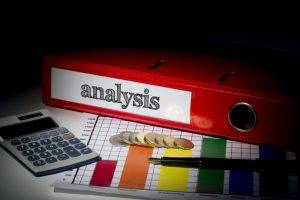The Role of the Business Analyst
Business Analyst, Business Analysis and BA are all terms that can be used to describe the same job. The term “business analysis” is often associated with software development projects where an individual will work on requirements gathering for new products or services. A business analyst may also perform other tasks such as process mapping, data modelling, system design, testing, etc.
The work of a business analyst can be split into a few key stages; investigate business systems, evaluate actions, document the business requirements, elaborate requirements.
And a few rationals:
Business improvement, not IT change – IT systems should enable business opportunities, therefore analytical skills need to be applied to the whole business process and not just the IT system being used. To analyse opportunities for business improvement.
Root causes, not symptoms – To look deeper than the issue, and to find what is causing it to be an issue.
Options, not solutions – To challenge the existing ways of working and to provide multiple options and outcomes that can be decided by stakeholders.
Negotiation, not avoidance – To act as a neutral party when dealing with stakeholders to ensure that everyone’s views are heard equally and to negotiate and mitigate conflict.
The scope of the business analyst role
The job roles of a business analyst are usually split into three separate roles, the BCS defines these as;
Strategic analysis and definition – which covers the high level, often senior management role to make strategic decisions of the organisation and to identify business transformation actions. In this role, the business analyst may act as a facilitator to the senior management team. This role requires the knowledge and understanding of strategy development and how it can impact and benefit IT systems.
IT systems analysis – The more traditional role of a business analyst responsible for analysing and specifying IT system requirements in enough detail for software to be designed or procured based on the assessment of the business requirements. This can also include mapping the business processes, such as using BPMN notation or the Engage Process Modeller, this is a key step to enable the discovery of inefficiencies and requirements. Process mapping is also beneficial as the results can be easily shown to the senior team including the product owner and project manager.
Business analysis – This covers the gap between strategic analysis and IT systems analysis, where the responsibilities may dip into both, including working with senior management and IT to enable effective analysis. This role is commonly assigned to localised issues where the ability to cover a wide range of responsibilities is required.
What does it take to be a business analyst?
Qualifications – Qualifications help to determine the standards to skills and abilities that a business analyst has. Training the certification is done by industry leaders such as BCS and IIBA, which are recognised by employers. Qualifications vary in depth and scope, ranging from Business Analysis Practice, up to the International Diploma in Business Analysis.
Soft skills – Being a business analyst requires several soft skills to enable the effective analysis of business processes and IT systems including, analytical thinking, attention to detail, verbal expression, Stakeholder engagement and analysis.
Agile systems development
As covered in a previous blog, the business analyst is a key part of an agile team, bridging the gap between the Solution Development Team and the Project level. This requires the business analyst to not only work in the solution development team to analyse inefficiencies, propose changes and define requirements but also be able to present the finding to the Project level.
In my previous work at Sedgemoor District council the solution development team consisted of:
Change Agent – A member of the service area or team who is enthusiastic about change, who shall lead the team through the project, championing the transformation principles of the organisation.
Practitioner – A member of the service area or team which is undergoing process redesign who has deep knowledge of how the service is run currently but doesn’t necessarily have the push and ideas for change. This enables accurate and in-depth As-Is process maps to be produced, which include the inefficient or wasteful parts of the process that can be identified and improved on in the To-Be mapping.
Customer Services – A member of the Customer Services team is a part of the project to champion the views of the customer and provide insight into how their customer will adopt new ideas.
IT – A member of the IT department is a part of the project to provide digital insight into new technologies that could improve the process by reducing processing time, or improving the customer experience.
Business Analyst – The business analyst’s role is to use the tools and processes set out by the Project team and use them to facilitate the service area redesign. This is through process mapping tools such as the Engage Process Modeller and data collection documents including stakeholders, legal requirements and local policies. The work produced in the solution development team is demonstrated to the Project Team by the Business Analyst.
Therefore, a business analyst needs to be able to effectively work with these roles to ensure that everyone’s views and ideas are being equally represented.

